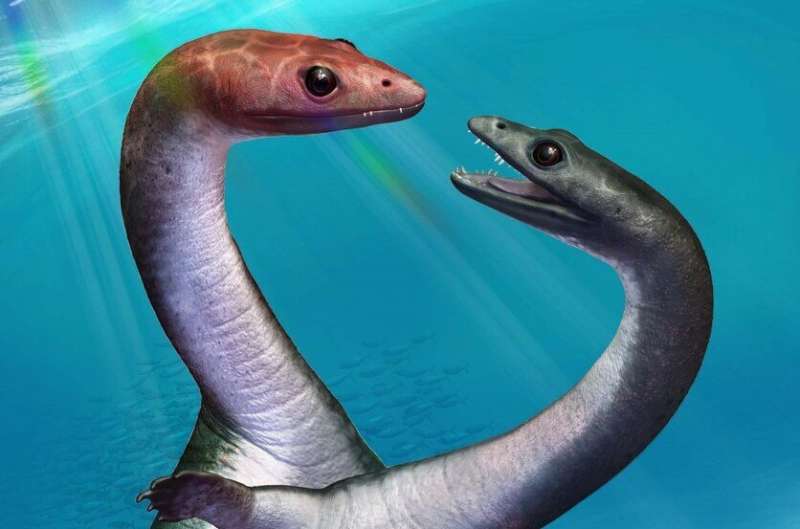This article has been reviewed according to Science X's editorial process and policies. Editors have highlighted the following attributes while ensuring the content's credibility:
fact-checked
peer-reviewed publication
trusted source
proofread
Exciting insights into the sexual development of an extinct marine reptile

Fossil skeletons have long fascinated researchers as a window to prehistory. But so far, little is known about details of sexual development in extinct creatures. An international team of researchers from China, Germany and Japan, with significant participation from the University of Bonn, reports on the puberty of Keichousaurus in the journal Current Biology. This is a small marine viviparous reptile that lived about 240 million years ago in what is now China.
Deer antlers, peacock feathers, and lion's mane are known as expression of sexual dimorphism. These are distinctly different physical characteristics between the sexes of a species. These visually noticeable differences usually appear only after the animal reaches adulthood, and they provide important information for understanding growth and reproduction.
In today's animal world, "sexual dimorphism" often appears at puberty, which represents the attainment of reproductive capacity or sexual maturity. However, in some species, especially reptiles, it is difficult to detect the onset of sexual maturity. Differences between the sexes usually show up here only in coloring or body size. Both are difficult to prove from fossils.
The present study focused on Keichousaurus, a species discovered in Triassic sediments—dating back to about 240 million years ago—in southwestern China. This species is known for its large number of specimens, including specimens with embryos, and its obvious sexual dimorphism. For instance, males of this species grew significantly larger than the females. Furthermore, adult males of Keichousaurus have much more robust upper arm bones (humeri), which also look quite different from those of females. In cross-section, the humerus of a male is triangular and that of females is round-oval.
Studies of bone tissue now indicate differential deposition in males, resulting in a triangular cross-section. In contrast, females retained an oval cross-section similar to that of juveniles. The deposited bone tissue before, during and after puberty also provides important insights into growth and sexual development in this group.
Bone compactness and growth rate analyses confirm rapid growth to puberty. Differences in growth rate and maximum attained body size are strategies of the sexes to ensure survival to reproductive maturity and success with the opposite sex. For instance, females of Keichousaurus apparently found larger males more attractive than smaller males. Males that grew faster than others were therefore more likely to reproduce successfully. The observed increase in bone density after the end of puberty in both sexes corresponds to a slowing of growth, suggesting a shift of energy from growth to reproduction.
The transformation of the humeri midshafts in males corresponds to an enlargement of the muscle attachment sites, suggesting more robust forelegs. Keichousaurus males may have been subject to higher demands from territorial fighting. This put more stress on their front legs. Strong forelegs could also possibly have been advantageous in copulatory posture during the mating process. The interplay of endogenous hormonal regulation during puberty and external pressure stimuli probably jointly contribute to the morphologic change of the male humerus during this phase.
More information: Qiang Li et al, Puberty in a Mesozoic reptile, Current Biology (2023). DOI: 10.1016/j.cub.2023.05.073
Journal information: Current Biology
Provided by University of Bonn





















